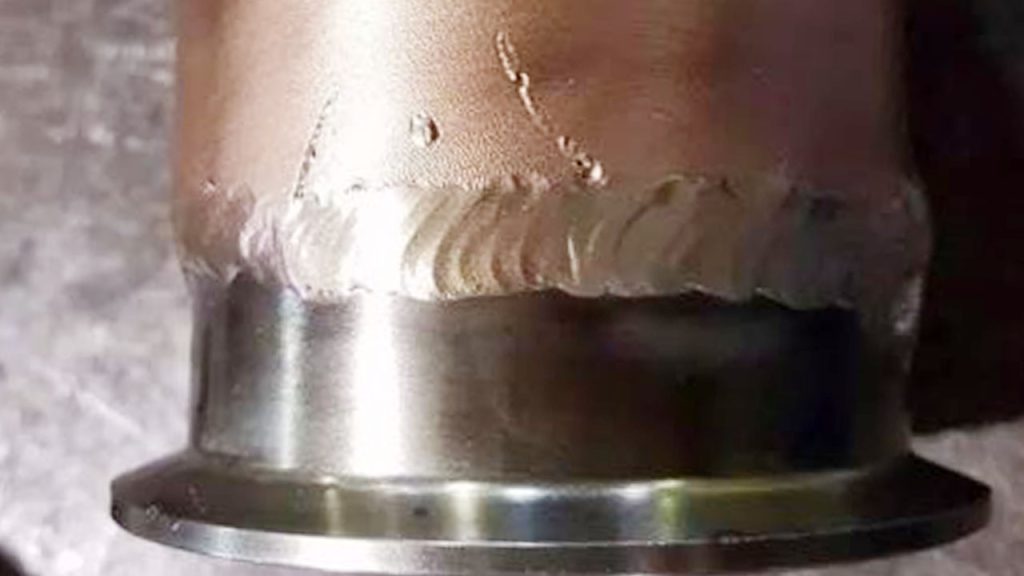When I first started welding, I remember seeing the term “duty cycle” on my welder’s specifications and thinking, “What on earth does that mean?” It wasn’t until I experienced my machine shutting down during a project that I realized how important it was to understand.

The welding duty cycle is one of the most critical factors to consider when choosing or operating a welder. It can affect your workflow, productivity, and even the lifespan of your machine. Whether you’re a beginner or an experienced welder, knowing what the duty cycle is and how to use it to your advantage can make all the difference.
Let’s dive into what the welding duty cycle really means, why it’s important, and how to apply this knowledge in your welding projects.
What Does Welding Duty Cycle Mean?
The duty cycle is a measure of how long a welding machine can operate continuously within a 10-minute period before it needs to cool down. It’s typically expressed as a percentage.
For example, if a welder has a duty cycle of 60% at 200 amps, this means the machine can weld continuously for 6 minutes at 200 amps and then requires 4 minutes of cooling time.
Why Does the Duty Cycle Matter?
Understanding the duty cycle is crucial because it helps you:
- Prevent Overheating: Avoid pushing your machine beyond its limits.
- Improve Efficiency: Plan your workflow more effectively.
- Prolong Machine Life: Reduce wear and tear by operating within safe limits.
How is the Duty Cycle Calculated?
The duty cycle is calculated based on a 10-minute cycle. Manufacturers determine the duty cycle by testing the machine under specific conditions, usually at a given amperage.
Here’s a simple formula to understand it:
- Duty Cycle (%) = (Welding Time ÷ 10 Minutes) × 100
For instance, if your machine can weld for 5 minutes straight at a certain amperage, its duty cycle would be:
(5 ÷ 10) × 100 = 50%
Factors That Affect the Duty Cycle
Several factors can influence a welder’s duty cycle:
Amperage
Higher amperage settings reduce the duty cycle. For example, a welder might have a duty cycle of 60% at 100 amps but only 20% at 200 amps.
Machine Design
More advanced or industrial-grade machines often have higher duty cycles because they’re built with better cooling systems.
Environmental Conditions
Welding in hot or poorly ventilated areas can lower the duty cycle because the machine heats up faster.
Type of Welding Process
Processes like MIG, TIG, or stick welding can affect the machine’s heat generation and cooling needs.
How to Choose a Welder Based on Duty Cycle
When picking a welder, you’ll want to match its duty cycle to your typical project needs. Here’s what to consider:
| Project Type | Recommended Duty Cycle | Example Scenarios |
|---|---|---|
| Light DIY Projects | 20%-40% | Small repairs, hobby welding |
| Medium-Scale Fabrication | 40%-60% | Automotive work, medium-sized structures |
| Heavy Industrial Welding | 60%-100% | Structural steel, pipeline welding |
What Happens If You Exceed the Duty Cycle?
If you push your welder beyond its duty cycle, it will likely overheat. Most modern machines are equipped with thermal overload protection, which shuts the machine down automatically to prevent damage.
While this safety feature is helpful, it’s better to avoid reaching that point. Frequent overheating can shorten your machine’s lifespan and disrupt your workflow.
Practical Tips for Managing the Duty Cycle
Managing the duty cycle effectively can save you time and extend the life of your equipment. Here are some practical tips:
Monitor Your Welding Time
Keep track of how long you’ve been welding and take breaks as needed to allow the machine to cool.
Use Lower Amperage Settings
Whenever possible, use a lower amperage setting to increase the duty cycle.
Improve Ventilation
Ensure your work area is well-ventilated to help the machine cool down faster.
Upgrade Cooling Systems
Some welders allow you to add external cooling units or fans for better heat dissipation.
Plan Your Workflow
Alternate between welding and other tasks to give the machine time to rest without slowing down your project.
Common Myths About Welding Duty Cycle
Myth 1: Higher Duty Cycle Always Means a Better Welder
While a high duty cycle is essential for industrial work, it may be unnecessary for light DIY projects. Choose a welder that matches your specific needs.
Myth 2: Duty Cycle is Always Accurate
Manufacturers test duty cycles under ideal conditions. Real-world factors like ambient temperature and ventilation can affect performance.
Myth 3: Exceeding the Duty Cycle Will Ruin Your Welder Immediately
Modern welders have safety features to prevent permanent damage, but repeatedly pushing the limits can still reduce the machine’s lifespan.
Duty Cycle in Different Welding Processes
Each welding process interacts with the duty cycle differently.
MIG Welding
MIG welding often requires a higher duty cycle due to its continuous nature.
Stick Welding
Stick welding is less dependent on a high duty cycle since the electrode needs to be replaced periodically.
TIG Welding
TIG welding benefits from a high duty cycle, especially for long, precise welds.
Real-World Example: Choosing the Right Machine
When I was working on a project involving thick steel beams, I realized my small 20% duty cycle MIG welder wasn’t cutting it. After some research, I upgraded to a machine with a 60% duty cycle at 200 amps. It made a world of difference, allowing me to weld longer without interruptions.
This taught me that understanding the duty cycle isn’t just a technical detail—it’s a practical consideration that directly impacts your productivity and results.
Conclusion
Understanding the welding duty cycle is like knowing the limits of your own stamina—it helps you work smarter, not harder. Whether you’re a hobbyist or a professional, paying attention to the duty cycle ensures you get the most out of your machine while avoiding unnecessary frustration or downtime.
Take the time to evaluate your needs, choose the right welder, and manage the duty cycle effectively. You’ll thank yourself later when your projects run smoothly and your equipment lasts for years to come.
FAQs
What is a good duty cycle for a beginner welder?
A 20%-40% duty cycle is sufficient for most beginner projects like DIY repairs and light welding tasks.
Can I increase my welder’s duty cycle?
While you can’t change the machine’s design, using lower amperage settings and improving cooling can help extend welding time.
What happens if I ignore the duty cycle?
Ignoring the duty cycle can lead to overheating, which triggers the thermal overload protection and interrupts your work.
Do all welders have the same duty cycle?
No, duty cycles vary depending on the machine’s design, amperage, and intended use.
How do environmental conditions affect the duty cycle?
Hot or poorly ventilated environments can reduce the duty cycle by causing the machine to overheat faster.
Is a higher duty cycle always better?
Not necessarily. It depends on your welding needs. For light projects, a lower duty cycle is usually sufficient.

Endow Russel the owner chief editor of giftendow.com . I am a mechanical engineer and assign to an local firm with much experience in welding and industrial equipment.

